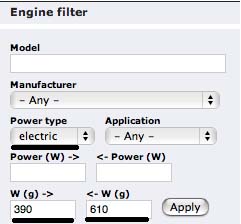|
Motor Power System for an ARF, Kit or Plans Built Glow Powered Prop Plane (Heck of a title, eh?) By Ken Myers, May 2011 Updated: September 2012 with all links checked September 2011 Update: Revised and easier to use Excel workbook. Spelling and grammatical errors corrected in text. The screen captures of the spreadsheets have been updated to the latest version. Note: There are MANY ways to choose an electric power system for a glow conversion to electric power.
Converting a glow powered almost ready to fly (ARF), plans built or kit built, prop propelled, model aircraft to an electric power system may seem like a daunting task to someone with no electric power system experience. "How can the motor, and the other electric power system components, the battery, electronic speed control (ESC) and propeller, be selected by someone with little prior knowledge of electric power systems?" 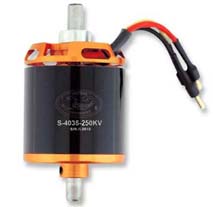 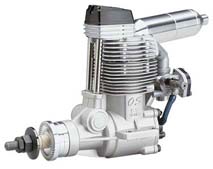 Why is picking an engine so 'easy' for a glow plane and a motor so 'hard' for an electric? When suppliers of glow engine airframes recommend a certain cubic inch (cu.in.) displacement 2-stroke or 4-stroke engine, it is not just a power recommendation. They are not only recommending the engine 'size', but they are also recommending the prop diameter and pitch.
|
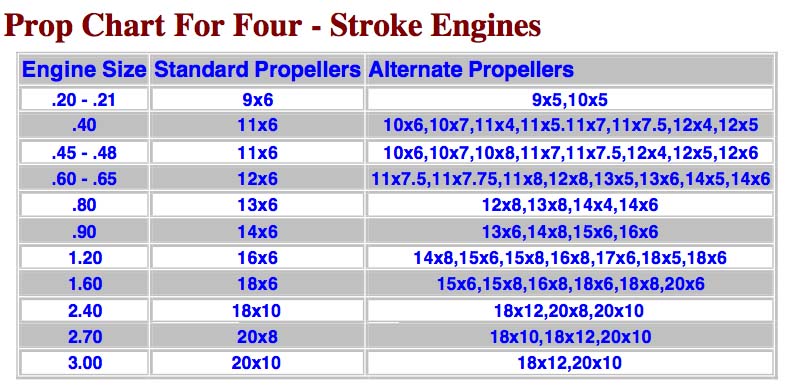
Prop Chart from www.flyurbana.com/media/Chart.PDF
|
A typical sport 1.20 4-stroke might use a 14x8, 15x6, 15x8, 16x6, 16x8, 17x6, 18x5, or 18x6 prop. (See Prop Chart for Four-Stroke Engines.) Various prop brands may 'work better' or 'worse' on a given engine, but the size (diameter and pitch) is quite limited.
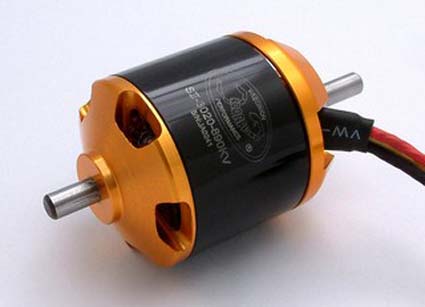 A Scorpion SII-3020-890 (3846-890, 166g) motor, using a 3S Li-Poly battery, is in its useful power range using a 10x5 prop through a 15x6 prop. There are roughly a dozen or more diameters and pitches that fall within the useful power range when a 3S pack is used. The motor is rated up to a 5S Li-Poly. Using a 4S or 5S pack adds a whole array of different props to the mix resulting in well over 25 different prop sizes that may be useful within the motor's power range. Using "A123" 2300mAh LiFePO4 cells instead of Li-Poly cells adds even more usable props to the mix! To keep the process as simple as possible, a glow to electric Excel workbook, with spreadsheets for Li-Poly and "A123" 2300mAh cells, has been designed to use as a guide.
The Suggested Power In unit of measurement is watts in (watts = volts times amps) as displayed by a power meter connected between the battery and electronic speed control (ESC) at full throttle. It is Extremely Important to verify that the current and power do not exceed the capabilities of the motor, ESC and battery. Exceeding the capabilities of any of the power system components will cause catastrophic failure to one or more of the power system components! A power meter is essential when working with electric power systems! The Example Model: 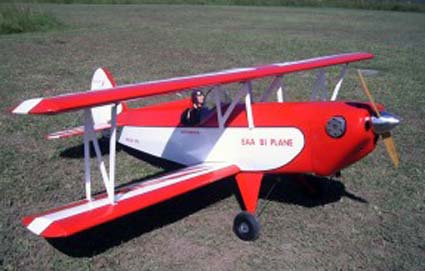
Balsa USA 1/4 Scale EAA Bipe The spreadsheet is designed so that user inputs are placed in cells with green backgrounds and results are presented in cells with red backgrounds. The spreadsheet input cells are noted in parenthesis after the Manufacturer or Supplier recommended maximums (Max.). Name of Plane: 1/4 Scale EAA Bipe (B6)
 The Wing Cube Loading (WCL), presented in result cell (B13), is 6.81 oz./cu.ft. Knowing what wing cube loading (WCL) is or how it works is not important to the use of the spreadsheets.
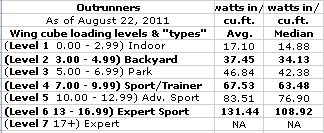
Average and Median watts in/cu.ft. There is a table on the spreadsheet, similar to the one shown above, that shows the average and median watts in per cubic foot of wing area. It also indicates the WCL Level number and typical types of missions. The lower the WCL level number, the "easier" the plane is to fly. The easier a plane is to fly, the more susceptible it becomes to increasing wind speeds. The example plane has a WCL of 6.81; Level 3 'typical park flyer'. Even though the 'typical' mission is 'park flyer', the example plane is too big and fast to actually fly in a park, but it will fly like a 'typical park flyer', very easily.  The Suggested Power result is 975 watts in. The weight range is the first motor characteristic determined.
|

Prop Chart from www.flyurbana.com/media/Chart.PDF
|
The electric prop diameter is based on a relationship to the 4-stroke Standard Propeller diameter. To determine the prop diameter, add 2 inches in diameter to the 4-stroke recommended Standard Propeller.
If the plane has a tricycle landing gear configuration, or for some other reason, a prop with the suggested diameter can't be used using the 4-stroke method, add 2 inches of diameter to the suggested 2-stroke glow engine prop diameter. |
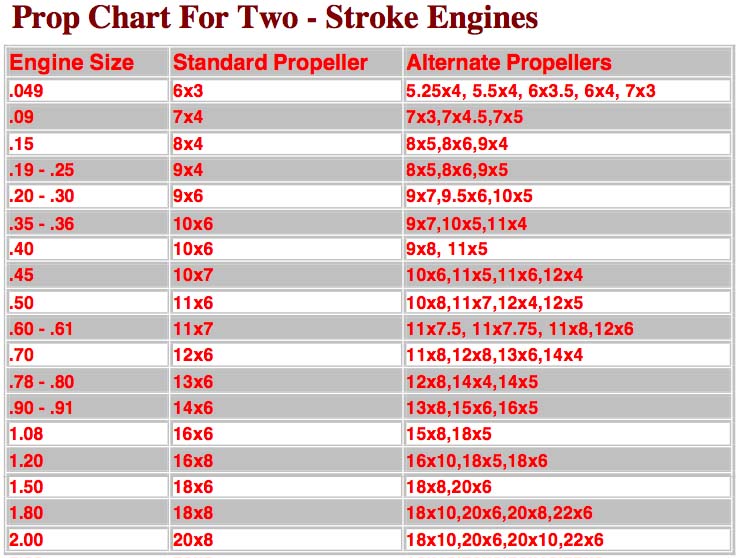
Prop Chart from www.flyurbana.com/media/Chart.PDF
|
A typical tricycle landing gear, high-wing or shoulder-wing, glow 40 trainer might use a .40 or .45 2-stroke engine using a 10-inch diameter prop. (see table) A 12-inch prop diameter should be a usable. This is the 'hardest' part of the whole process, and I can't help you with it. Basically, you can't go wrong, as any of the suggested pitches will provide the information required to find the correct motor, ESC and battery combination. I use APC E thin electric props and base my selection on the pitches they have available for the chosen diameter and the plane's mission.  The pitch suggestion box (cells A37 through B40) shows suggested pitches for the WCL levels after the prop diameter is input. The prop diameter, for the example plane, is 18" and was input previously in B20. For Cub-like planes, biplanes and other civilian light aircraft with a WCL level of 4, it might be better to use the WCL 1-3 pitches. If more speed is desired of a WCL level 3 plane, a pitch may be chosen either between the WCL 1-3 pitches and the WCL 4-7 pitches or at the lower end of the WCL 4-7 pitches. The example plane is a WCL Level 3.
Not all props are created equal! Zinger props should be avoided. They are relatively inefficient, compared to other brands, when used in electric motor applications and draw too much current. APC slow flier (SF) props and GWS RS props are not designed for this purpose. APC sport, pattern and thin electric (E) props are appropriate. APC props are listed at www.apcprop.com/pindex.asp. Master Airscrew wood props and G/F 3 series props also work well in electric power applications, but NOT the Master Airscrew electric props!  Once the prop diameter and pitch have been input, the resultant Target RPM of 5500 and pitch speed of 52 mph are displayed. The Pitch Speed to Stall Speed ratio of 3.31:1 is displayed. Anything greater than 3:1 is quite good. Pitch Speed Conformation: 
Pitch Speed Table For reference, the pitch speed table can be used to compare the pitch speed to both average and median electric and glow powered planes. The table indicates that a predicted pitch speed of 52 mph for the example plane is a bit 'faster' than the typical Level 3 electric and a bit 'slower' than the typical Level 3 glow plane. Recap: 1. Motor needs to handle at least 975 watts in
At this point, an important motor number is missing. It is the Kv (RPM/volt) number. Don't worry if you don't know what it is or how it affects a motor's operation. It just needs to be determined and used for final motor selection.
Step 4: Determining which Kv (RPM/v) to use Manufactures and suppliers provide one more important piece of information about their motors. It is called the Kv (RPM/v). Kv is a motor constant that is best thought of as RPM per volt out. It is not the expected RPM per volt applied at the ESC!
|

|
For the example plane, 5-cell (5S) through 9-cell (9S) Li-Poly packs should be considered.
How to locate a motor - the hard part:
|

|
1. From the RCBOOK index page, select Parts from the tabs across the top of the screen.
4. Finding possible outrunner motors: Make a list noting the number of cells and Kv range. (Using the workbook can be helpful! Select the spreadsheet in the workbook named motor notes and do the note taking there.) For the example plane: 5S Kv 360 - 400
Go through the returned results on RCBOOK looking for outrunners that fit the various Kv ranges and note them. Don't worry about the nomenclature of the various brands. The only thing that is important is the weight, which was set by the Engine filter and the Kv. The Kv for all brands is not always shown on the info page. A click on the photo link for the motor may be necessary to find the Kv.
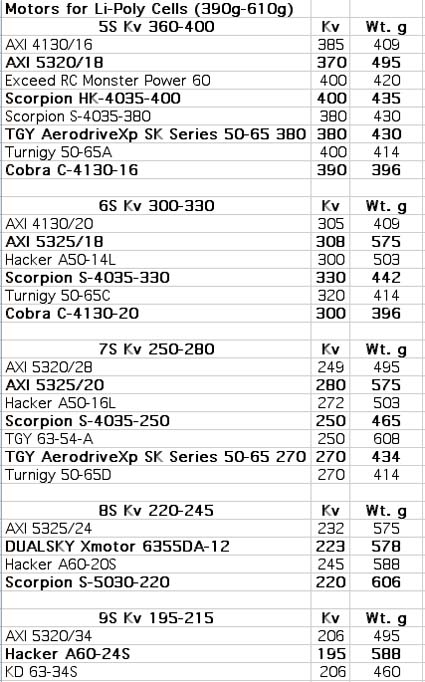 While 28 possible motors for this plane is significant, it is a lot less than hundreds of possible motors!!! Next, use Google search to locate a supplier for the motor and note the supplier's Web site address and price on the motor notes spreadsheet. After the Google search the motor notes spreadsheet looks like this. (Web addresses truncated in this screen capture.) |
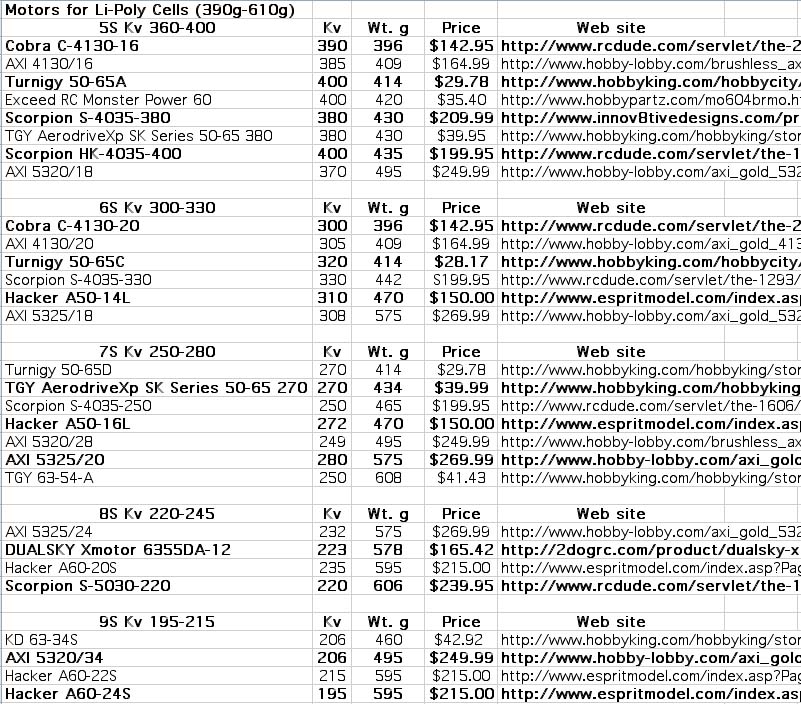
|
The motors may now be compared by Kv, weight, supplier and price. Outrunner Supplier Notes:
Batteries:
|

|
A word about electronic speed controls: You can't go wrong with Castle Creations (CC) ESCs. The following CC ESCs are appropriate for the example plane based on the recommended ESC amp draw in Row 33 of the spreadsheet.
9S (Row 33 31.0 amps) Phoenix Ice HV 40 $129.95
Putting it all together: All of the systems will work with the example plane when the selected prop is an APC 18x10E thin electric. Here is a recap of what is required for the battery, ESC and motor. 5S 5800mAh Li-Poly battery (5500mAh, 5600mAh and 5700mAh are not as common), 70-amp ESC, 360Kv to 400Kv outrunner motor weighing between 390g and 610g 6S 4900mAh or 5000mAh Li-Poly battery (4700mAh and 4800mAh are not as common), 60-amp ESC, 300Kv to 330Kv outrunner motor weighing between 390g and 610g 7S 4000mAh Li-Poly battery, 50-amp ESC, 250Kv to 280Kv outrunner motor weighing between 390g and 610g 8S 3600mAh Li-Poly battery (3500mAh is not as common), 45-amp ESC, 220Kv to 245Kv outrunner motor weighing between 390g and 610g 9S 3200mAh Li-Poly battery (3100mAh is not as common), 40-amp ESC (most likely will need to be a high voltage (HV) type), 195Kv to 215Kv outrunner motor weighing between 390g and 610g A word about using "A123" 2300mAh cells The Excel Workbook also contains a spreadsheet for "A123" 2300mAh cells. The process for finding a motor and prop is the same as when using Li-Poly cells.
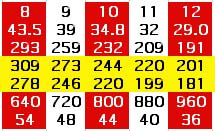 9, 10 or 11 "A123" 2300mAh cells could be considered for use with the example plane. The motor notes results look like this. |
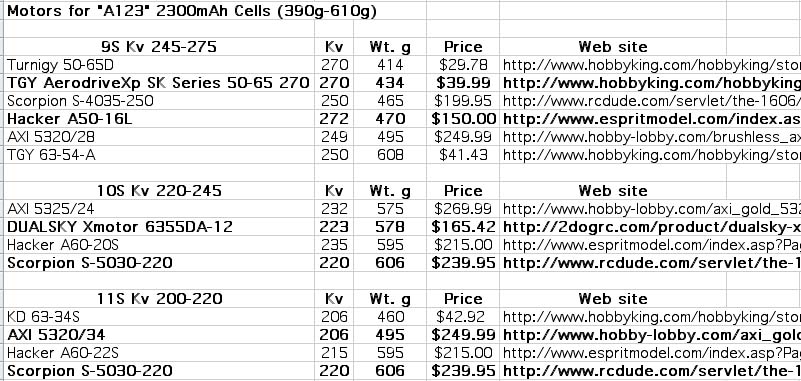
|
My purchased power system choice for my 1/4-scale BUSA EAA Bipe; 9S "A123" 2300mAh battery pack, Castle Creations' Phoenix Ice HV 60 and a Scorpion S-4035-250. What to do if Microsoft Excel in not on the computer For computers that do not have Microsoft Excel, the FREE Open Office Suite may be used. WING CUBE LOADING (WCL) by FRANCIS REYNOLDS WING CUBE LOADING, by Roger Jaffe 3D Wing Loadings: a Better Way to Scale Models WCL Calculator online at Electric Flight UK Unlike glow engines, there is no standard way of 'naming' an electric motor. Using a generic name for all outrunner motors allows for direct comparisons. The generic name for the outrunners used in this article is the first two digits indicate the outside diameter in millimeters (mm) with the next two digits noting the can length in mm, then a dash followed by the Kv (RPM/v). A comma separates the weight in grams from the rest of the motor description. The Scorpion SII-3020-890, used to illustrate the versatility of an electric outrunner motor, has a can diameter of 38mm, can length of 46mm, Kv of 890 and weighs 166g. Its generic name is 3846-890. More on "generic" motor naming here |
To Reach Ken Myers via E-mail kmyersefo@theampeer.org
The EFO Web Site


